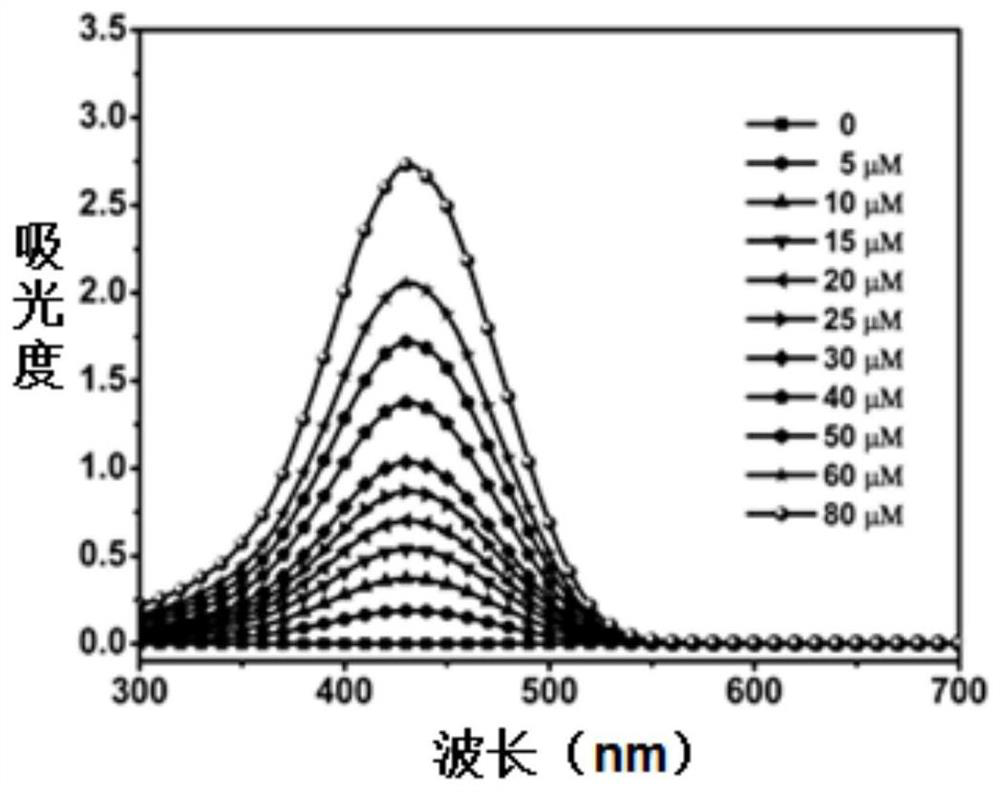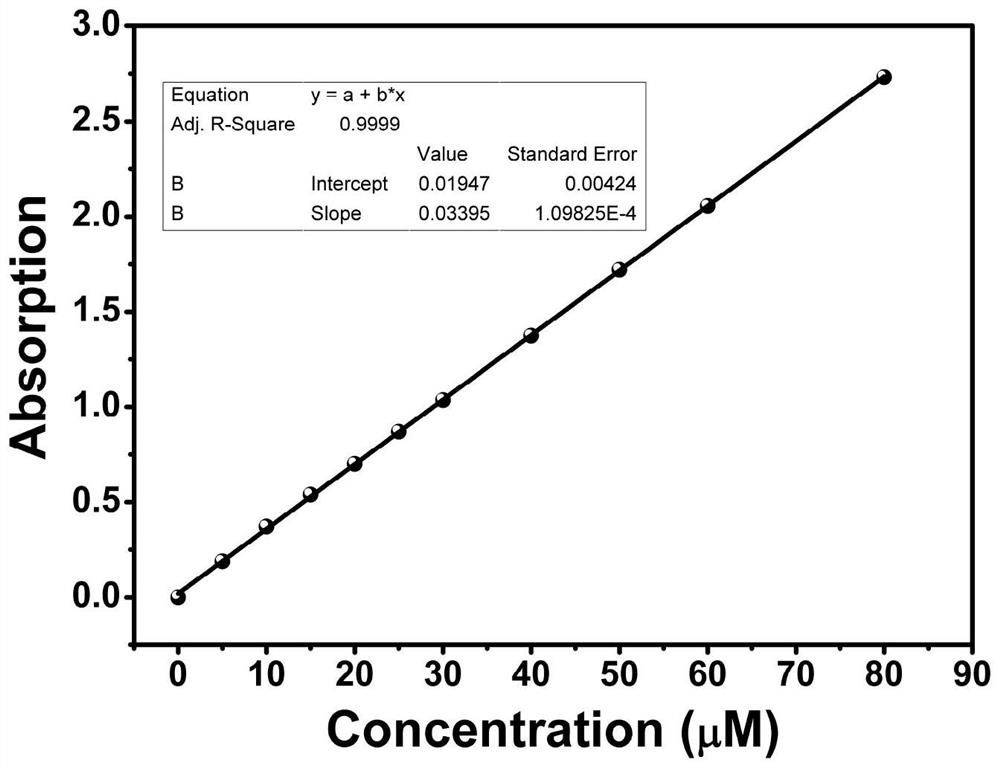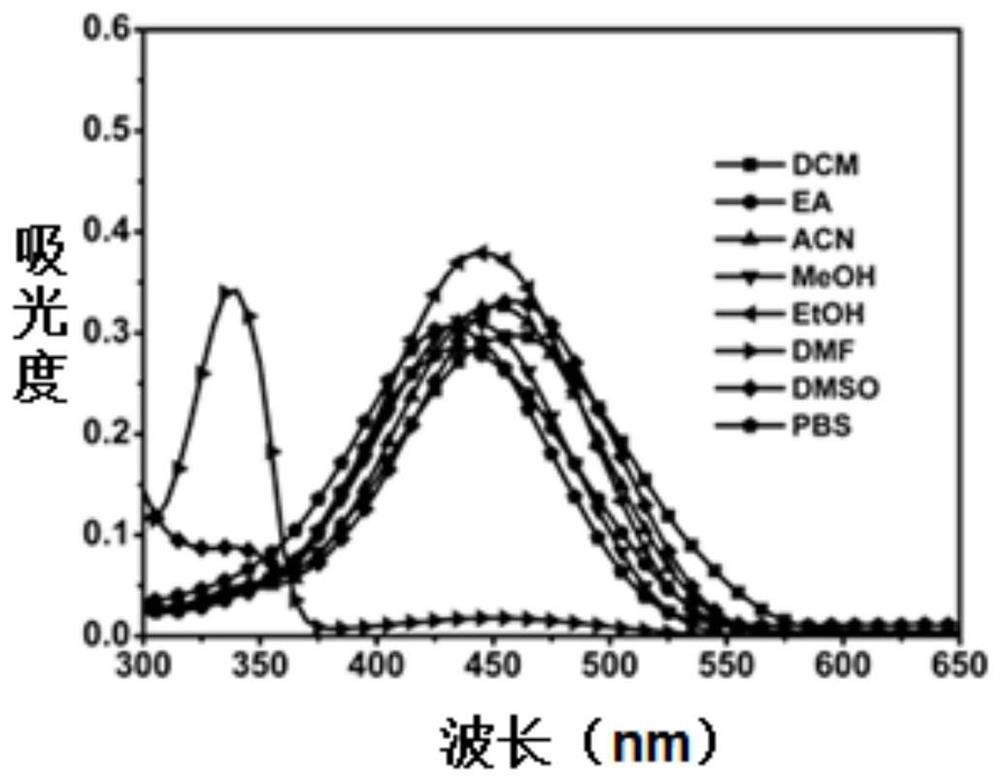Fluorescent probe and its preparation method and use
A technology of fluorescent probes and detection reagents is applied in the field of preparation of fluorescent probes for distinguishing normal cells from cancer cells, and can solve the problems of difficult in vivo tumor imaging, inability to visualize in situ in real time, and low tissue penetration ability.
- Summary
- Abstract
- Description
- Claims
- Application Information
AI Technical Summary
Problems solved by technology
Method used
Image
Examples
preparation example Construction
[0061] In another aspect, the present invention provides a method for preparing the above-mentioned fluorescent probe having the structure of formula I of the present invention, said method comprising the following steps:
[0062] (1) Compound 1 is reacted with malononitrile according to the molar ratio of 1:2 to 1:4 to prepare compound 2;
[0063]
[0064] (2) compound 3 and compound 4 were reacted according to the molar ratio of 1:1 to 1:2 to prepare compound 5;
[0065]
[0066] (3) Compound 5 is reacted with manganese dioxide according to a molar ratio of 1:5 to 1:10 to prepare compound 6;
[0067]
[0068] (4) compound 2 and compound 6 were reacted according to the molar ratio of 1:1 to 1:2 to prepare compound 7;
[0069]
[0070] (5) compound 7 reacts with trifluoroacetic acid according to the molar ratio of 1:50~1:200 to prepare the compound of formula I;
[0071]
[0072] In a specific embodiment, the above-mentioned fluorescent probe of the present in...
Embodiment 1
[0090] Solubility test of fluorescent probe in PBS (10mM pH 7.4) buffer solution.
[0091] Prepare the mother solution of the fluorescent probe in a volumetric flask with dimethyl sulfoxide solvent. Then use a micro-sampler to take samples, make solutions with concentrations of 0, 5, 10, 15, 20, 25, 30, 40, 50, 60, and 80 μM, and scan them with an ultraviolet-visible absorption spectrometer to obtain the following: Figure 1a UV-Vis absorption spectrum. Take the absorption intensity (Abs) at the position of the maximum absorption peak as the ordinate, and the concentration as the abscissa to plot ( Figure 1b ). It was found that with the continuous increase of the concentration, the concentration and the absorption intensity showed a strong linear relationship (R 2 =0.9999), indicating that the fluorescent probe of the present invention has good solubility in PBS (10 mM pH 7.4) buffer solution.
Embodiment 2
[0093] Investigate the UV-visible absorption and fluorescence emission experiments of fluorescent probes in different common solvents.
[0094] Add 5 μM fluorescent probes to dichloromethane (DCM), ethyl acetate (EA), acetonitrile (ACN), methanol (MeOH), ethanol (EtOH), dimethylsulfoxide (DMSO), dimethylformaldehyde Amide (DMF), PBS (10mM pH 7.4) buffer solution to scan its UV-Vis absorption spectrum ( Figure 2a ) and fluorescence spectra ( Figure 2b ). In most solvents, the position of the absorption peak of the probe is basically unchanged, only the absorption peak in DMF has an obvious blue shift. Fluorescent probes luminesce most strongly in DMSO solution.
PUM
 Login to View More
Login to View More Abstract
Description
Claims
Application Information
 Login to View More
Login to View More - R&D
- Intellectual Property
- Life Sciences
- Materials
- Tech Scout
- Unparalleled Data Quality
- Higher Quality Content
- 60% Fewer Hallucinations
Browse by: Latest US Patents, China's latest patents, Technical Efficacy Thesaurus, Application Domain, Technology Topic, Popular Technical Reports.
© 2025 PatSnap. All rights reserved.Legal|Privacy policy|Modern Slavery Act Transparency Statement|Sitemap|About US| Contact US: help@patsnap.com



